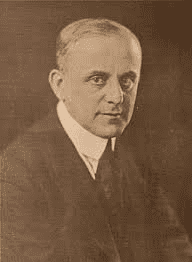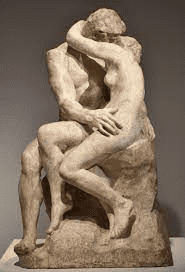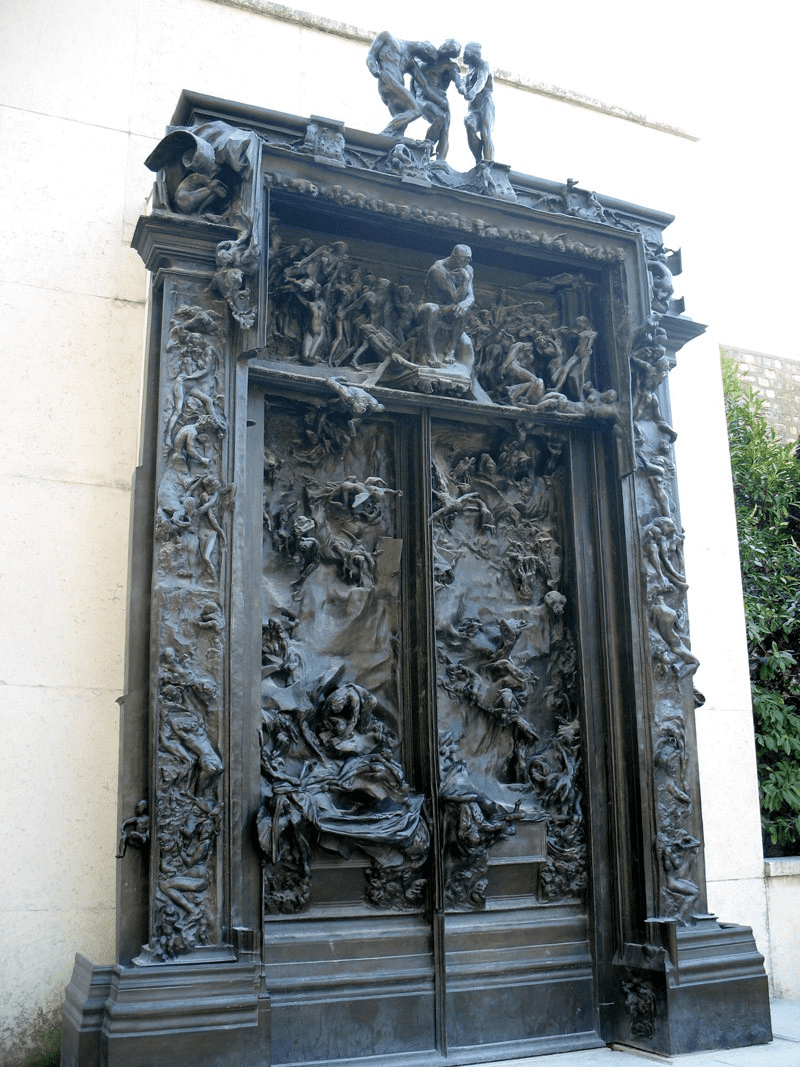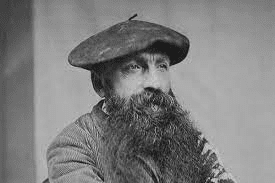Philadelphia is home to a wonderful miniature version of the famous Musée Rodin in Paris. The Philadelphia institution holds the world’s second-largest collection of works by the genius sculptor. The museum houses over 100 of Rodin’s works, including completed bronze sculptures, plaster casts, as well as books, letters and some other personal belongings of the artist. Interestingly, this collection entered the history of Philadelphia as a great gift to the city. Learn more at philadelphia-future.
A historic present from a philanthropist to his hometown
The beautiful exposition of the Rodin Museum in Philadelphia was assembled in just three years, from 1923 to 1926. It was made thanks to a movie theater magnate, philanthropist and collector Jules Efraim Mastbaum, who was born into a Jewish family in Philadelphia. The man owned more than 220 theaters (it was the largest theater network in the world at that time) and spared no effort or expense to bring his grandiose plan to life. In 1926, the magnate commissioned the construction of the museum building and its gardens to French architects Paul Cret and Jacques Gréber. He was the sole sponsor. Unfortunately, the patron passed away that same year. The museum opened its doors in 1929.

Photo: Jules Efraim Mastbaum
A place of unforgettable impressions
One of the most famous museums in Philadelphia is located in the city center on Benjamin Franklin Parkway in the middle of a beautiful park. The establishment is managed by the Philadelphia Museum of Art. The collection of the Rodin Museum includes 133 works of the artist. The most valuable of them are located under the museum’s glass dome. Many creations are placed in the park. At the entrance to the museum, visitors are greeted by a copy of Rodin’s most famous sculpture, “The Thinker” (the original is exhibited in Paris). “The Thinker” was to become one of the numerous figures in the sculptural group “The Gates of Hell”. This is an unfinished monumental decorative portal, the most known project of Rodin (more about the Gates will be discussed a little later). Visitors to the museum can also enjoy other copies of the artist’s famous pieces, including “The Kiss,” “Eternal Springtime,” “The Burghers of Calais” and “The Colossal Head of Balzac.” You can learn more about the master’s works by using the English-language app “The Rodin Museum in Philadelphia.” You can download it on your phone or simply read the support sign near each sculpture or hire a guide.

Photo: “The Kiss”
Tourists note that the Rodin Museum and the exhibition itself do not look large at first glance. However, true admirers of beauty say that each sculpture makes you stay near it for a long time and leaving the establishment without wonderful impressions is impossible. A full tour will take several hours. Visiting the museum requires getting a ticket, but the adjacent park area, which also has plenty of interesting things, is free of charge. In addition to the artistic space, it is also a favorite spot of lovers and enthusiasts of unusual photos. Of course, who wouldn’t want to take a picture against the backdrop of the symbolic Gates of Hell? The Rodin Museum is beautiful in any season of the year, but it is especially charming in the fall. This season brings an incredible atmosphere to the surrounding park. Since the establishment is very popular and is included in most tourist routes, it’s better to buy tickets in advance. If you want to avoid large crowds of tourists, plan your visit for the second half of a weekday. The museum is open from Wednesday to Monday.
In 2012, the art museum reopened after a big renovation that lasted for three years and cost the institution an unprecedented $9 million.
Unforgettable Auguste Rodin

Auguste Rodin was born in Paris in 1840 into a family of a minor official. He was bad at mathematics and Latin at school. He also struggled with reading and writing, making many errors. However, he had a passion for drawing. Thanks to his sister Marie, who convinced their parents, he studied to become a decorator. Then Rodin made three unsuccessful attempts to enter the École des Beaux-Arts in Paris. His debut work, “Man with the Broken Nose,” at the Paris Salon in 1864 did not bring success as well. For over 10 years, Auguste worked as an apprentice, decorator and sculptor. When Marie suddenly passed away, Rodin even gave up sculpting. He became a laybrother of priest Peter Eymard. However, this man convinced Rodin to resume the art. Fortunately, the talented Auguste listened to him. He began to work hard and bought a stable that became his workshop. Collaboration with several well-known contemporaries benefited the artist, as did a trip to Italy in 1876, where he was impressed by the works of Raphael, Michelangelo and Donatello.
It is a pity that contemporaries did not fully appreciate the talent of the artist during his lifetime and did not recognize him for a long time. His first big order, which was also state, Rodin received in 1880. It was supposed to be a nearly six-meter-high door for the new Museum of Decorative Arts, the famous “Gates of Hell” mentioned above. The master improved them many times but never completed them. He spent almost all the funds that the state had given him in advance on making casts, casting molds and paying models who worked for days. They changed poses until the artist saw a good one and asked them to freeze. While creating “The Gates of Hell,” Auguste made hundreds of sketches, many of which he later destroyed. He also created up to 200 figures. Some of them were made in bronze or marble (for example, “The Thinker,” “The Kiss,” “The Three Shades” and “Adam and Eve,” the latter was excluded from the composition after another revision by an unsatisfied author).

Photo: “The Gates of Hell” in Paris
Under the agreement, the sculptor had to complete the grand project in 1885. But it didn’t happen. The museum was never created. Rodin returned the funds to the state and continued working on the gates until his death (a total of 37 years!), drawing inspiration from Dante’s “Divine Comedy” and other works by great artists. Ultimately, the endless work on “The Gates of Hell” turned out to be beyond his capabilities. Although the first major commission led to subsequent ones. Country after country, the world learned about the artist!
A brilliant move – a successful will
Biographers say that Auguste Rodin had an affectionate nature. Having a companion, Rose Beuret, who had his son, Rodin also paid a lot of attention to his young muse, Camille Claudel. It is an indisputable fact that his most prominent creations were the result of his collaboration with his lover Camille.
In 1900, the sculptor was finally given an entire pavilion at the World Fair in Paris. Over 100 of his completed and unfinished works were presented there. Rodin’s students became famous sculptors in the future. At the age of 55, the artist bought an estate near Paris, where he built a studio and kept many of his works.

Photo: Auguste Rodin
In 1916, Auguste Rodin wrote his will, which became a kind of brilliant strategic move to take care of his creative legacy even after his death. Rodin expressed his wish that his legacy would be transferred to the country. In return, his estate (where he lived from 1908 to 1917) and the surrounding park had to be transformed into a museum dedicated to his work. This legacy included both completed and unfinished works and sketches, as well as paintings by other renowned artists that belonged to him. Already in 1917, Rodin suddenly died from complications of pneumonia. Instead of a tombstone, his work “The Thinker” was placed on his grave in his estate in Meudon…
So following his will, the most famous of the Rodin museums is located at the Hôtel Biron (or the Château de Biron). It was opened to the public in 1919. The institution is one of the most popular museums in Paris. In total, it houses over 6600 sculptures, 7000 other pieces of art and more than 8000 photographs.
Three major museums are dedicated to the works of the brilliant founder of modern sculpture, Auguste Rodin. In addition to the mentioned above, there is another French Rodin Museum established in 1930 in Meudon, where his villa was located and where he is buried. Naturally, there is a magnificent “replica” in the United States, the Rodin Museum in Philadelphia.